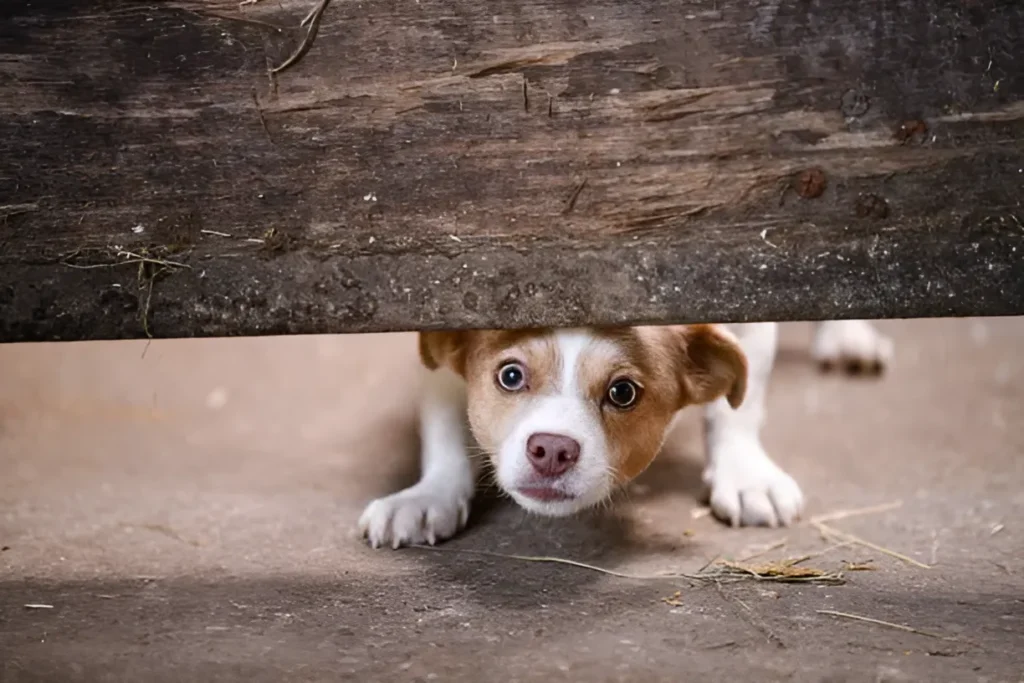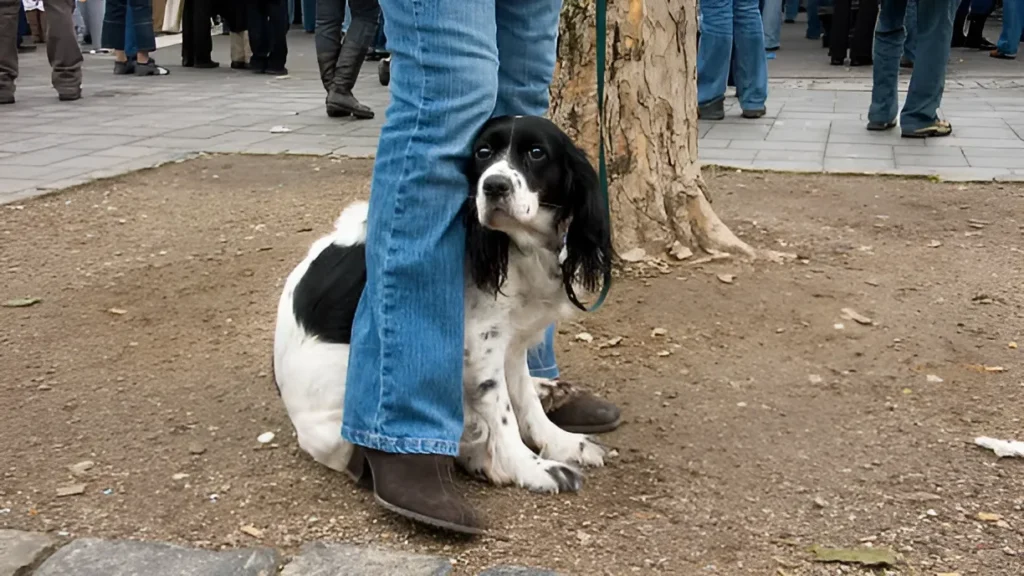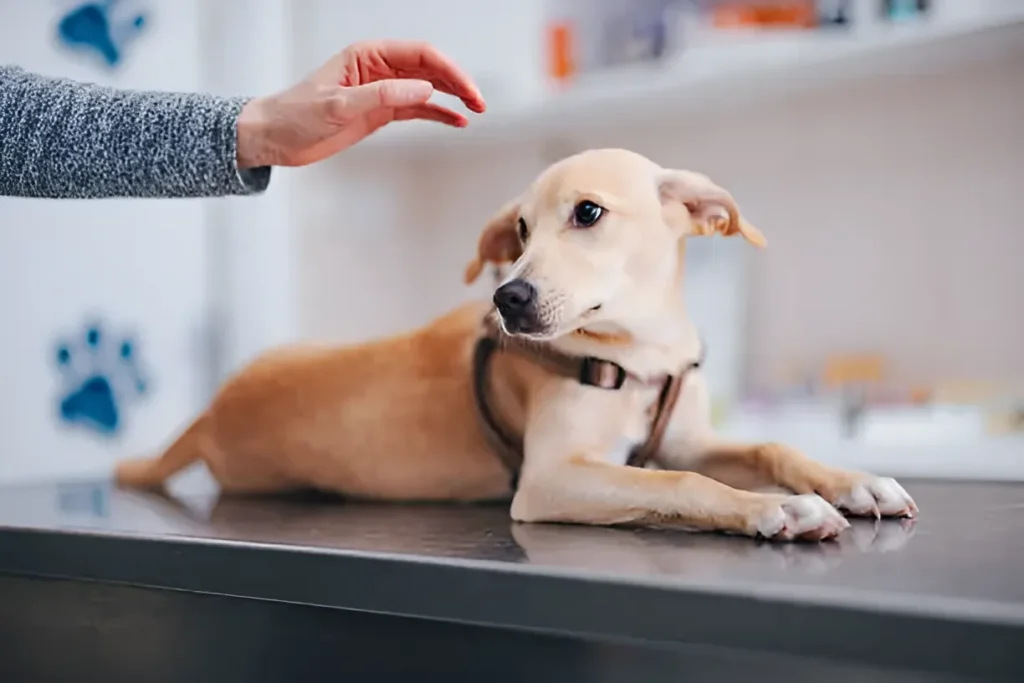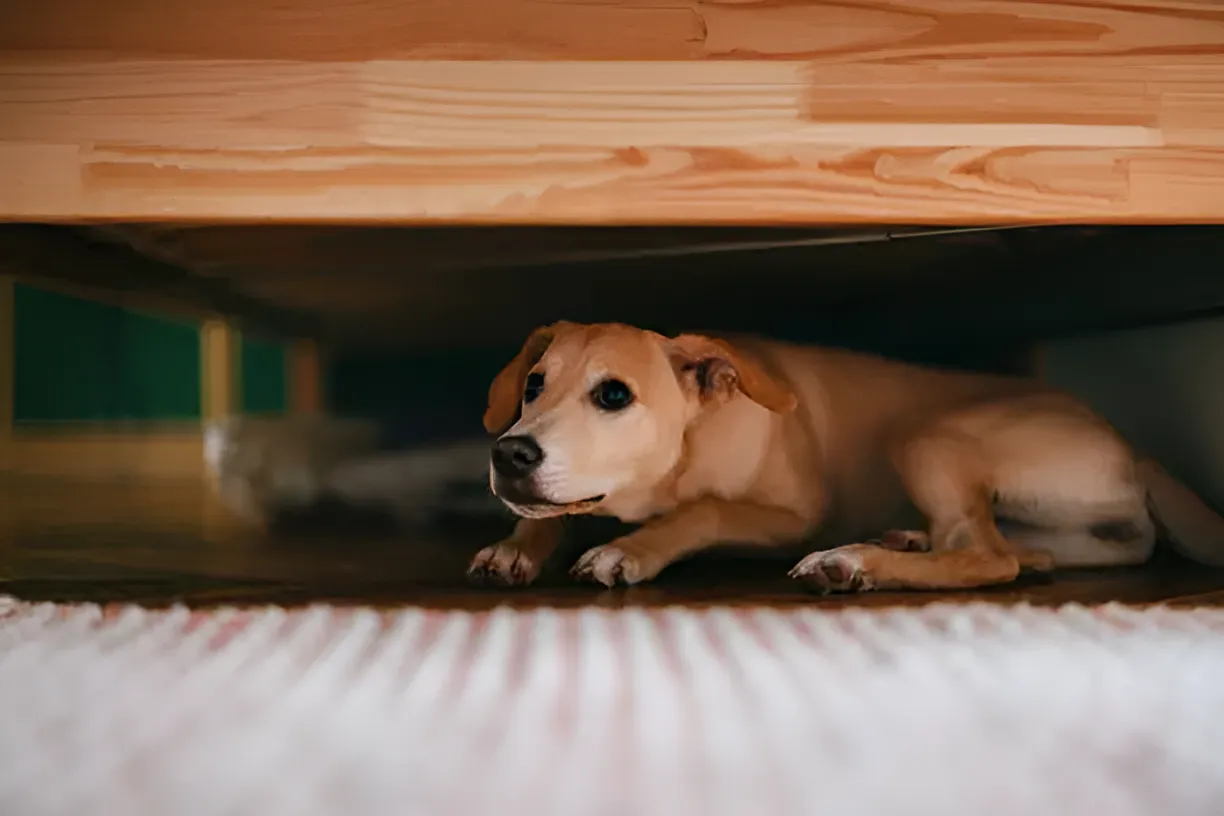“Building trust with a scared dog is a journey of patience and understanding,” says a certified dog behavior consultant”
The cornerstone of helping your scared dog trust you lies in creating a secure environment, respecting their boundaries, and fostering positive associations. This process requires unwavering patience and a deep understanding of anxiety in dogs.
Decoding Your Dog’s Fears: Triggers, Causes, and Body Language
Before helping, it’s essential to understand the roots of fearful dog behavior. This requires careful observation and consideration of:
1. Specific Triggers: Identify situations or stimuli that elicit a fear response (strangers, loud noises, vet visits, etc.)
2. Past Experiences: Learn about your dog’s history, if possible. Abuse, neglect, shelter environments, or limited socialization can contribute to anxiety in dogs. (Fearful behavior is often seen in rescue dogs due to bad past experiences)
3. Canine Body Language: Recognize signs of distress such as trembling, tail-tucking, cowering, excessive panting, lip licking, yawning, or showing the whites of their eyes.
The Language of Trust: How to Communicate with a Scared Dog

Your demeanor plays a crucial role in establishing trust. Project calmness and avoid any fearful dog behaviors that could be perceived as threatening:
- Avoid Direct Eye Contact: Soften your gaze or look away slightly.
- Appear Smaller: Crouch or sit on the floor to become less intimidating.
- Approach Indirectly: Move at an angle or in a gentle arc, never head-on.
- Speak Softly: Use a low, soothing voice. Refrain from raised tones or sudden exclamations.
- Mindful Movements: Move slowly and predictably.
Creating a Sanctuary: Building the Perfect Safe Space for Your Dog
Providing a designated safe space is paramount for reducing anxiety in dogs. Consider these elements:
- Designated Area: Choose a quiet corner of your home for their bed/crate.
- Comfort is Key: Provide soft blankets, familiar scents, and perhaps a comforting item like an old T-shirt of yours.
- Optional Cover: Draping a blanket over their crate can create a cozy den-like feeling.
- Respect is Essential: Never force a dog out of their safe space. Allow them to emerge at their own pace.
Positive Reinforcement: The Key to Building Trust with Your Dog
Help your dog associate you with positive experiences – this is the bedrock of trust-building.
- High-Value Rewards: Experiment to find your dog’s ultimate treat (boiled chicken, cheese, tiny pieces of hot dog).
- Treat Scatter: Toss rewards gently near you, allowing your dog to investigate and gain confidence.
- Play as a Tool: If your dog shows interest, initiate brief, gentle play sessions with soft toys.
- Affirmation Matters: Use a calm, reassuring voice to praise even small acts of bravery.
Security Through Routine: How Predictability Helps Anxious Dogs
Predictable routines bring a sense of security to anxious dogs. Establish clear patterns for:
- Feeding Times: Regular mealtimes reduce uncertainty and anticipation.
- Walks: Provide exercise, mental stimulation, and controlled exposure to the outside world.
- Dedicated Calm Time: Schedule quiet time for gentle cuddling or low-key playtime in the evenings.
Overcoming Fears: A Guide to Desensitization and Counterconditioning

Gradual exposure, strategically paired with positive reinforcement, can reshape your dog’s fearful associations and build their confidence. This process is called desensitization and counterconditioning.
- The Power of Small Steps: Start with a version of the fear trigger so low in intensity (distance, volume, etc.) that your dog shows minimal or no fear response. This is their starting baseline.
- Rewarding Calmness: Each moment your dog remains calm at that baseline level earns high-value rewards and praise. By coupling the trigger with positive experiences, it begins to change in their minds.
- Patience is King: Increase the intensity of the trigger very slowly, over multiple sessions. If at any point your dog shows distress, you’ve moved too quickly. Scale back and focus on their comfort zone.
Example: A Fear of Strangers
Let’s say your dog is afraid of strangers. Here’s how desensitization might look:
- Baseline: Find a distance where your dog notices a stranger but shows no overt fear (no barking, cowering, etc.).
- Reward and Repeat: Have the stranger stand still while you give your dog treats and praise. Repeat this over several short sessions across multiple days.
- Tiny Steps: Over many sessions, have the stranger take a single step closer, then stop. Continue rewarding calmness. Increase the closeness gradually as your dog feels more confident.
Important Note: This process takes time and consistency. Rushing can make your dog’s anxieties worse.
Advanced Support: Calming Aids and Professional Intervention

- Supplements & Tools: Consult your veterinarian about calming supplements, dog-appeasing pheromones (DAPs), or anxiety vests (e.g., ThunderShirt).
- Professional Guidance: For severe fears or limited progress, a certified positive reinforcement trainer or behaviorist can offer tailored plans and expert support.
Conclusion
Building trust with a fearful dog takes time and dedication. Celebrate small victories, maintain consistency, and offer your pup unconditional love and support.
The photo featured below the post headline is Credit: miniseries/Gettyimages
I hope you find this post helpful and informative. If Yes’ feel free to share it with your friends!
Frequently Asked Question
How long does it take for a scared dog to trust you?
This varies depending on the dog’s history and severity of fear. It could take weeks, months, or even longer.
Is it OK to pet a scared dog?
Only if they initiate closeness. Let them come to you.
What if my dog hides all the time?
Respect their need for space and focus on building positive associations from a distance.
My dog is scared of everything. How can I start helping them?
Begin by carefully identifying specific triggers – loud noises, strangers, the vet, etc. Focus on building their comfort level in a safe space, and start with very controlled desensitization to the least-threatening trigger.
When is it time to get professional help with my dog’s fear?
If your dog’s fears significantly impact their daily life (refusal to eat, constant hiding, extreme reactions), or if you don’t see progress with at-home strategies, it’s time for a consultation. A certified positive reinforcement trainer or veterinary behaviorist can create a tailored plan.
Can I make a scared dog trust me quickly?
Unfortunately, building genuine trust takes time. Focus on consistent, positive experiences, respecting their boundaries, and rewarding even small steps. Pressuring a fearful dog will backfire.
How do I get an abused dog to trust me?
Patience and understanding are paramount. Prioritize creating a safe, predictable environment and avoid overwhelming them. Let the dog approach you on their terms, and focus on gentle praise and treats. Professional help is often wise in these cases.
My dog is fearful and seems aggressive, how do I build trust?
Fear-based aggression is complex. Never attempt to address this without the guidance of a qualified veterinary behaviorist. They will rule out medical causes and provide safe, structured training plans.
How long does it take to gain a scared dog’s trust?
This varies significantly based on the dog’s individual history and the severity of their fears. Some dogs blossom within weeks, while others can take months or even longer. Celebrate each tiny step forward!

